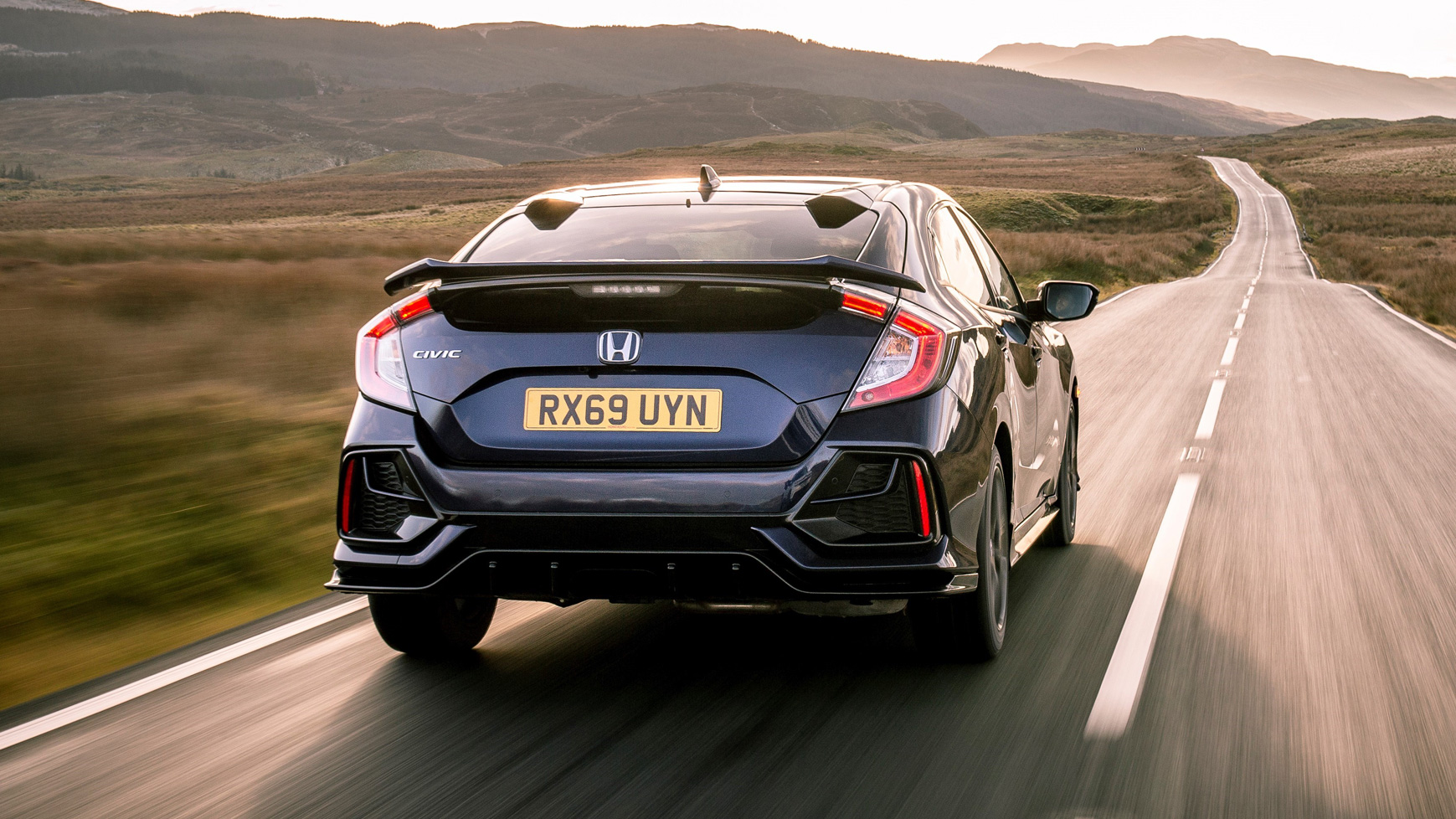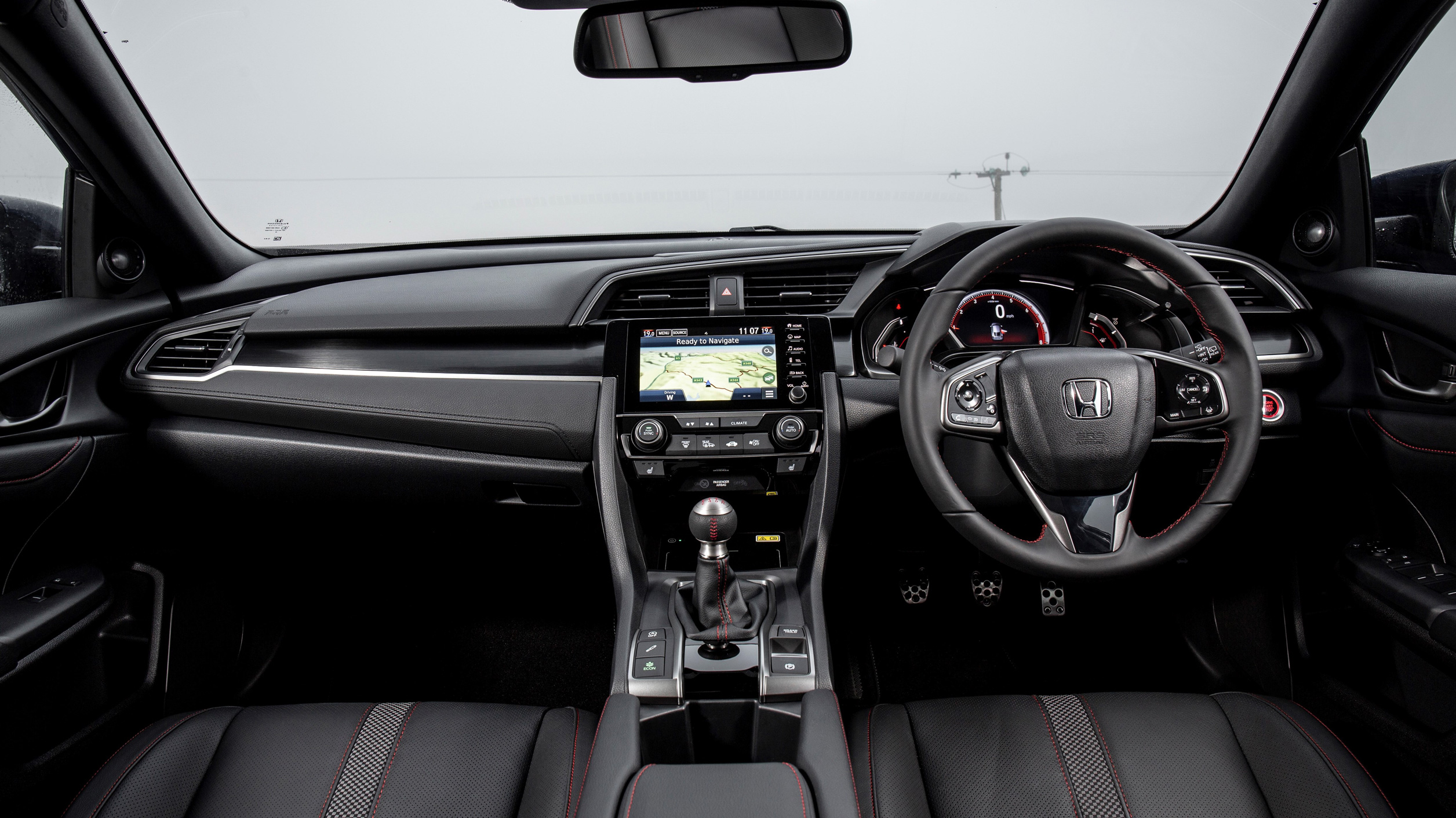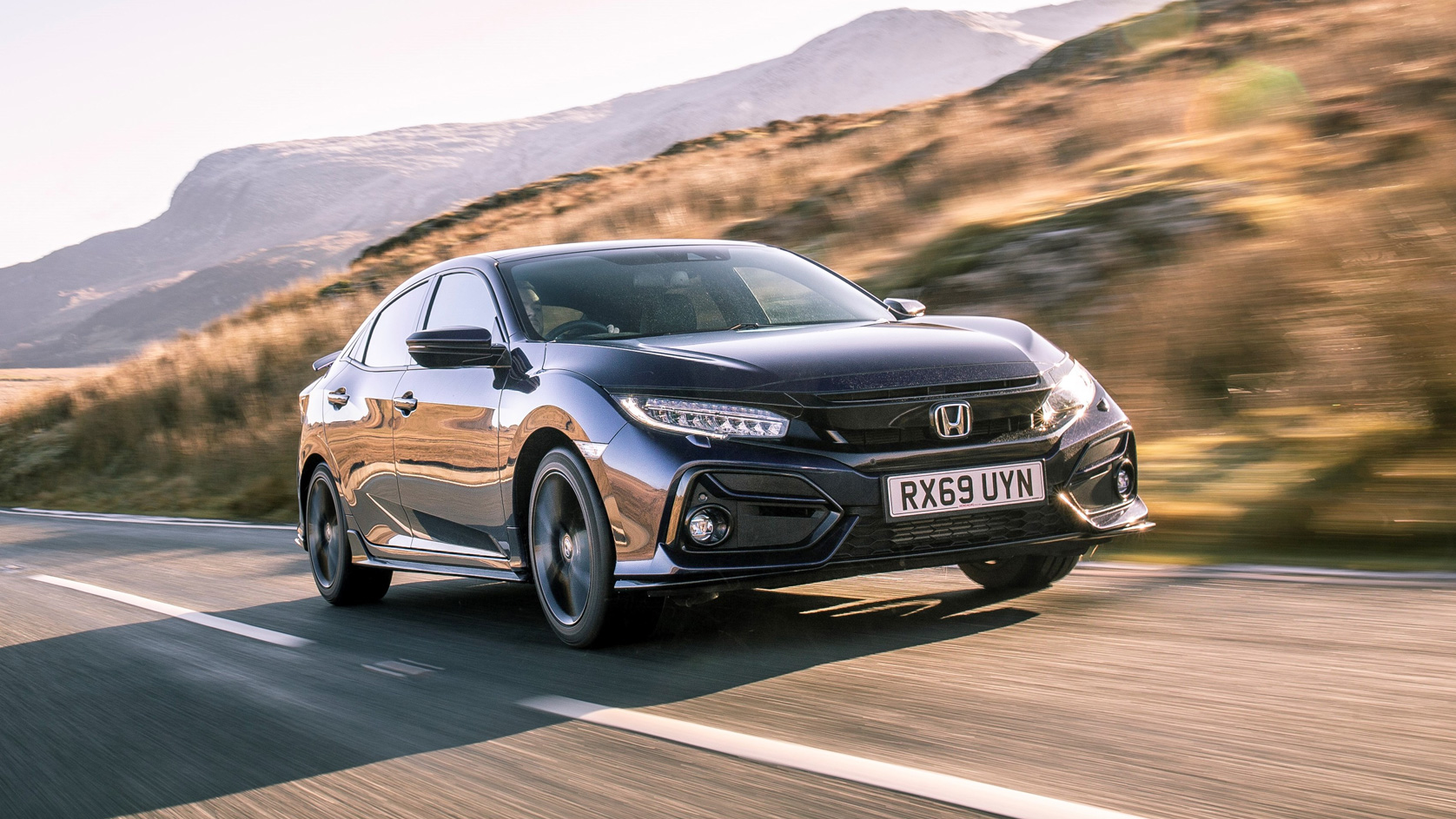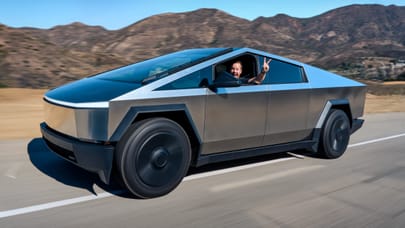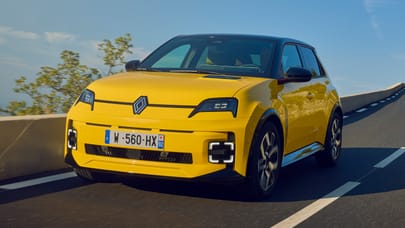
Interior
What is it like on the inside?
The main instrument cluster consists of a TFT screen with a half-moon tacho wrapping around a digital speedo and lots of selectable ancillary info. The graphics are clear enough, if not especially beautiful, and on either side are bar graph fuel and temperature gauges.
The main central touchscreen measures 7in on higher spec versions, and 5in on the lowest. The bigger one features Honda Connect, linking you to web-based apps and traffic, and enabling Apple CarPlay and Android Auto. Response time and touch smoothness of the screen are acceptable, even if the graphics again are slightly dated. The 2020 update brought with it shortcut buttons for most of the main features. You can quickly adjust temperature and fan speed with actual knobs on the dash too.
Lying below all that, the central spine of the Civic is vastly accommodating. A two-level tray holds a phone or three. A conduit takes a USB cable from the low-mounted slot to the upper-level tray. That’s thoughtful. This upper tray can also act as a wireless charger on the right spec if your phone takes it. Behind that is a big armrest/cubby/cupholder set-up with dozens of possible arrangements.
The back seat is fine for legroom, if tight for tall heads. Behind that, the boot is big anyway, and even deeper if you can live without the optional spare wheel. Instead of a rigid boot cover that’s a pain to store when you fold the seats, there’s a roller blind that brilliantly goes side to side. Rolled up, it’s little more than the size of a telescoping umbrella. Still some clever touches to admire then, even without those magic seats.
Outward vision isn’t great – all that style comes at a price, especially at the rear of the car. Much of the apparent glass area in the rear three-quarters and back window is just glossy black paint, and the higher spec models get a rear spoiler across said window. You’ll want the reversing camera.




